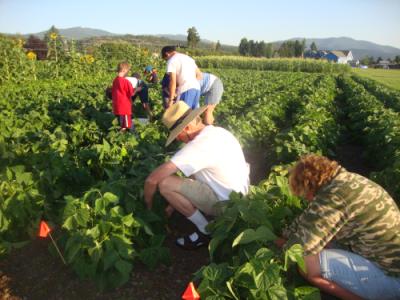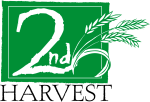The Plant a Row for the Hungry (PAR) program encourages community members to dedicate a row (or more) of fruit, vegetables and/or herbs in their garden to help feed those in need. PAR was spearheaded by Jeff Lowenfels, a garden writer for the Anchorage Daily News and former Garden Writers Association (GWA) president. The idea was implemented as a national program by the GWA soon after.
Second Harvest implemented PAR programs at both their Washington locations: Spokane and Tri-Cities. Second Harvest also collaborates with the University of Idaho’s Nutrition Program in Coeur d’Alene, ID. Produce donations from all three sites are tracked under Second Harvest’s annual PAR figures.
PAR hinges upon community engagement. Much of the community’s engagement with the program has been fueled by the distribution of free garden seeds and plant starts to community members. Dozens of seed companies across the country were contacted in search of support for the program. The response was astonoshing:
-
Over 1,700 pounds of garden seeds were donated by various companies
-
Several nurseries in Spokane collectively donated over 3,000 plant starts
These seed and start donations not only encourage program participation, but also open an avenue of volunteerism for local middle and elementary schools. Students who are too young to volunteer their time at Second Harvest’s warehouse found an opportunity to organize seed packets for distribution. A large portion of the seed donations arrived in excessively large bags, making the seeds impossible to distribute without breaking into easier to distribute quantities. To address this issue, seed packet templates were created. These customized packets, complete with PAR branding and information, allow for additional marketing of the program on top of the increased community engagement opportunity. Students from several middle and elementary schools cut, filled, pasted, and distributed thousands of seed packets throughout Spokane.
Spokane County receives an overwhelming response from residential gardeners, small and large scale farmers, schools, places of worship, businesses, clubs and organizations, all committed to putting their green thumbs to good use. An exceptional example is the Pumpkin Patch Community Garden. This community garden had much surplus and was able to donate over 2,000 pounds of fresh, organic produce themselves in 2013!
Starting a Plant a Row campaign id easy to launch. The Garden Writers Association helps new programs get started, offering brochure templates and step-by-step instructions on implementing a new Plant a Row project. Their four step process model is as followed:

Step 2: Plan Your Campaign
Step 3: Publicize Your Campaign
Step 4: Celebrate the Harvest
Carol Ledbetter, Program Administrator for the Garden Writer’s Association, is a phenomenal resource for breaking ground a new Plant a Row project. Carol can be reached at here.
Follow Second Harvest’s Plant a Row program on Twitter


